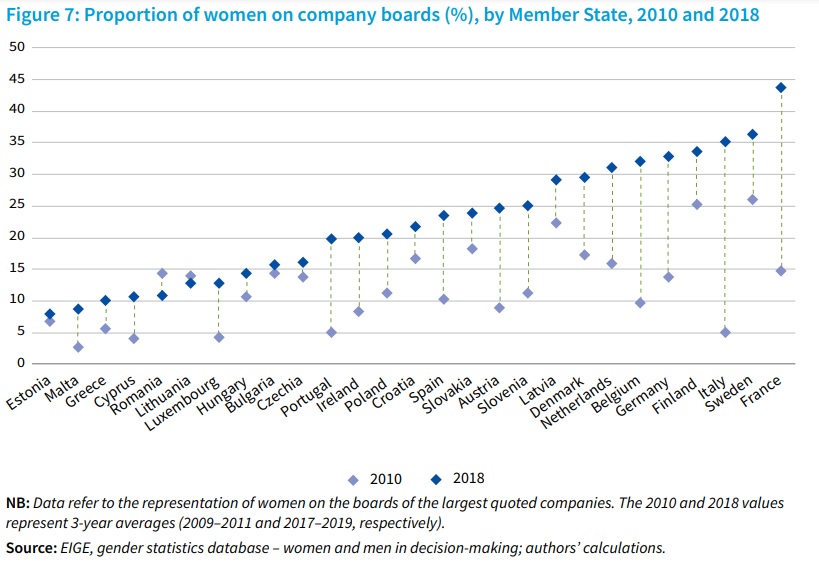Malta in penultimate position in the women on company boards league table

Despite trebling the percentage number of women on company boards between 2010 and 2018, Malta still lags behind when compared to the rest of the EU as it ranks in penultimate position, only ahead of Estonia.
The statistic was recently divulged in a Eurofound policy brief which outlines gender equality and disparities across the 27-member bloc with respect to the EU gender equality strategy 2020-2025.
During the 8-year period under review, disparities sharply increased between the Member States in the domain of power, which analyses the representation of women and men in a range of the highest decision-making positions across the political, economic and social spheres. This disparity has widened as some countries could not keep up with the pace of the improvements registered in other parts of Europe. In France and Italy, the percentage rose by more than 29 percentage points, and in Belgium and Germany by more than 19 percentage points.

On the other hand, improvements in Mediterranean Member States that were initially poor performers, such as Greece, Cyprus and Malta, were insufficient to match the top performers throughout the period. While in 2010 the proportion of women in company boards in Malta stood at around 2.5% by 2018 it had risen to 9%, which was still the second lowest ahead of Estonia where the respective rate was of 8%.
Romania and Lithuania were the only Member States where the proportion of women on company boards decreased (by 3.5 and 1.1 percentage points, respectively). However, they are still ahead of Malta.
The boost in the proportion of women on company boards in certain Member States seems to be linked to the adoption of legally binding measures such as quotas on minimum representations of each sex. Between 2010 and 2018, six Member States (Belgium, Germany, France, Italy, Austria and Portugal) adopted such measures and their impact was clear. The impact of such legislation was such that by October 2020, women accounted for around 37% of board members in the largest quoted companies in the Member States with binding quotas, whereas in Member States that did not take such measures it was less than 25%.
Other findings
The report measures gender equality by means of an index ranging from 1 to 100 with 100 representing full equality between women and men. The Gender equality Index, as it is known is based on a range of indicators on work, money, knowledge, time, power and health.
Between 2010 and 2018, the Gender Equality Index score rose in the EU as a whole and in all the Member States, although the pace of progress is slow overall and varies a lot by Member State. National disparities widened between 2011 and 2014 but narrowed in later years.
Sweden ranked first in advancing gender equality throughout the entire period, while Greece struggled the most. Several Mediterranean Member States and some of the Baltic Member States were among those catching up most with the EU average. In Italy, Cyprus, Malta and Portugal, the index increased by more than 7.5 points. Estonia recorded the most impressive rise of the three Baltic Member States – 7.3 points.
Developments stemming from the COVID-19 crisis threaten to roll back recent achievements in gender equality, especially in the domains of work and time. Measures to contain the pandemic took a heavy toll on women’s employment and caused a surge in their care responsibilities. There is also a tangible risk that the economic and social fallout following the health crisis may drive divergence and downward trends in Member States, as the disproportionate effect that the current crisis is having on women varies considerably by Member State.
